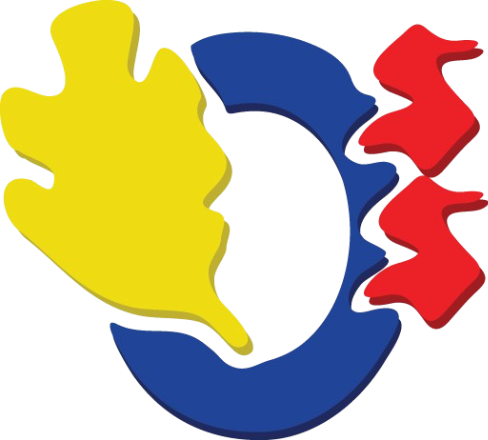Carbohydrates, Lipids, and Proteins
Carbon Structure and Bonding

- Chains can be straight or branched
- Rings are closed-loop structures
Carbon Chains vs. Rings:

- Carbon forms four covalent bonds → creates complex 3D molecules essential for life
Tetravalence of Carbon:

- Single = flexible, linear
- Double = rigid, introduces kinks
- Triple = shortest and strongest
Single, Double, and Triple Bonds:

- Makes carbon-based molecules stable and durable (e.g. proteins, DNA)
Strong Covalent Bonds:
Macromolecules and Polymers

- Large molecules made of monomers
- Formed by condensation reactions (removes water)
- Broken down by hydrolysis (adds water)
Macromolecules:

- Provides energy for synthesizing proteins, carbohydrates, and nucleic acids
ATP's Role in Polymer Formation:

- Hydrolysis of ATP releases energy for cell activities
Hydrolysis and Energy:
Carbohydrates

- Simple sugars; building blocks of carbohydrates
Monosaccharides:

- Long chains of monosaccharides (e.g. starch, glycogen, cellulose)
- Broken down by enzymes like amylase and maltase
Polysaccharides:

- Primary energy source
- Structural support
- Cell communication
Functions:

- Ring forms are more stable and biologically active
Ring vs. Linear Sugars:

- Hydroxyl groups form hydrogen bonds → soluble in blood → easily transported for energy
Glucose Solubility:
Polysaccharide Structures and Functions

- Highly branched → rapid glucose release for energy
Glycogen (animals):

- Helical and compact → efficient energy storage
Amylose (plants):

- Straight, unbranched chains stack tightly → structural strength in cell walls
Cellulose (plants):

- Cellulose = structure
- Amylose/Glycogen = energy storage
Functional Comparison:
Glycoproteins and Cell Recognition

- Proteins with attached carbohydrate chains
Definition:

- Cell recognition
- Communication
- Adhesion
Functions:

- Help distinguish 'self' vs. 'non-self' (immune response, tissue integrity)
Cell-to-Cell Recognition:

- Unique markers for each cell type → enables specific recognition
Carbohydrate Chain Role:

- Errors can cause autoimmune diseases
- Detect abnormal cells like cancer or infections
Immune Function:

- Glycoproteins adapt via changing carbohydrate chains in response to conditions
Dynamic Nature:
Lipids

- Nonpolar, hydrophobic molecules made of carbon and hydrogen
Definition:

- Hydrocarbon structure prevents hydrogen bonding with water
Water Insolubility:

- Membrane structure
- Energy storage
- Waterproofing
- Hormone transport
Biological Roles:

- Triglycerides
- Phospholipids
- Waxes
- Steroids
4 Classes:

- Three fatty acid chains + one glycerol
Triglyceride Structure:

- Long-term energy
- Insulation
- Organ protection
Functions of Triglycerides:

- Created through condensation reactions (water released when forming bonds)
Lipid Formation:
Lipids – Structure and Function

- Triglycerides in adipose tissue form water-excluding droplets for thermal insulation
- They trap heat and reduce body heat loss
- They protect and cushion vital organs
Thermal Insulation and Storage:

- Fats: Solid at room temperature; mostly saturated fatty acids
- Oils: Liquid at room temperature; richer in unsaturated fatty acids
Fats vs. Oils:

- Amphipathic: Hydrophilic (polar) head and hydrophobic (nonpolar) tails
- In water, form a bilayer: heads face water, tails inward
- Minimizes energy and creates stable membrane
Phospholipids and Cell Membranes:

- Compartmentalization of cell contents
- Selective permeability: allows certain substances through while blocking others
- Fluidity (due to lateral movement of lipids/proteins)
Functions of Bilayer:

- Phospholipids and embedded proteins move within the membrane
Dynamic Nature:

- Triglycerides: 3 fatty acid chains + glycerol
- Phospholipids: 2 fatty acid chains + phosphate group + glycerol
Phospholipids vs. Triglycerides:

- Saturated: No double bonds
- Monounsaturated: One C=C double bond
- Polyunsaturated: Multiple C=C double bonds
Fatty Acid Types:
Other Lipids

- Waterproof, protective coatings (e.g. plant cuticles, bird feathers)
Waxes:

- Structure: 4 fused hydrocarbon rings with functional groups
- Function: Hormone signaling (e.g. testosterone, cortisol)
Steroids:

- Steroid hormones are nonpolar → easily pass through lipid bilayer
- Functional groups give steroids their specific biological functions
Hormone Transport:
Proteins – Structure and Function

- Proteins: Chains of amino acids (polymers)
- Amino Acid Core - central carbon bonded to:
- Amino group (–NH₂)
- Carboxyl group (–COOH)
- R-group (varies)
Basic Structure:

- Polar: Partial charges (e.g. serine)
- Nonpolar: Hydrocarbon chains (e.g. valine)
- Negatively Charged (Acidic): Carboxyl groups (e.g. aspartic acid)
- Positively Charged (Basic): Amine groups (e.g. lysine)
- Diversity: 20 R-groups → diverse functions and properties in proteins
R-Group Categories:

- Signaling: Some amino acids act as neurotransmitters
- Transport: Contribute to active transport proteins, channels, etc.
- Essential: Must be obtained through diet
- Non-essential: Synthesized by the body
- Conditional: Needed in special conditions (e.g. stress, pregnancy)
Amino Acids and Roles:

- Results from lack of essential amino acids
- Common in strict vegan diets without supplementation
- Symptoms: Fatigue, muscle loss, immune dysfunction
Protein Deficiency Malnutrition:

- Peptides: Short chains of amino acids
- Dipeptide: Two amino acids joined by a peptide bond
- Polypeptides: Long chains that can fold into functioning proteins
Peptides and Polypeptides:

- Via dehydration reaction (removal of water)
Peptides and Polypeptides - Bond Formation:

- Determines protein identity and properties
- 20 amino acids → nearly infinite sequence combinations
Peptides and Polypeptides - Amino Acid Sequence:
Protein Folding and Structure

- Polypeptide folds into a 3D shape essential for function
Folding:

- Primary: Amino acid sequence
- Secondary: Alpha helices, beta sheets
- Tertiary: 3D folding based on R-group interactions
- Quaternary: Multiple polypeptides combined
Levels of Structure:

- Determined by amino acid sequence and interactions
Final Shape:
Denaturation

- Loss of functional 3D shape
Definition:

- High temperature: Breaks weak bonds by increasing vibrations
- pH changes: Alters charges on R-groups, disrupting ionic/hydrogen bonds
Causes:

 Biology
Biology